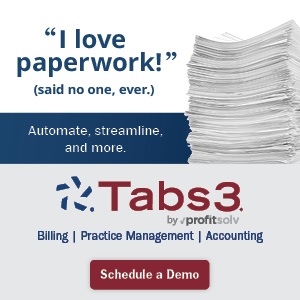But that’s a good way to lose business.
“Eventually, clients will be switching to other firms that are embracing the technological advancements and possibilities that are more efficient and collaborative,” says Daniel J. McCormack, CLM, Chief Executive Officer of Dan McCormack & Associates LLC. “Firms need to continue to adapt to new methods or risk falling behind.”
To stay more competitive, some firms have created formal innovation labs that merge technology, client collaboration and new product development. While their approaches vary, all are focused on enhancing quality, advancing efficiencies and improving client service. In a crowded market, it’s just one more tool to potentially help firms win business, so much so that law schools are tailoring programs to meet the need.
Law schools, recognizing the need for innovative services like these, are even responding with programs and degrees. The Master of Science in Law (MSL) degree at Northwestern Pritzker School of Law is the first master’s degree of its kind that combines the study of law, business and technology. The MSL program now has 550 alumni with diverse backgrounds, including data analytics, neuroscience, operations and business.
Daniel W. Linna Jr. co-leads the Pritzker School of Law’s Innovation Lab, where teams of Computer Science and Law students — including students from the MSL — have worked with law firms, legal departments, courts, and businesses to develop prototype technology solutions for legal services delivery challenges. Many MSL degree graduates now work in law firms or legal departments.
“Clients expect their law firms to use technology, data, and project management to deliver excellent results and provide exemplary service,” says Linna. “This requires a client service team with lawyers who understand these disciplines, as well as other legal professionals with deep expertise in these areas. Our courses aim to prepare JD and LLM [Masters of Law] students for success as attorneys, and MSL students for success in a variety of legal operations and related roles.”
CUSTOMIZING TO YOUR FIRM
The first thing to note about innovation labs is that they can be scaled to fit any size firm. So if you’re thinking this won’t work in your smaller firm, that’s not necessarily true. Even small and mid-size firms can consider supporting an innovation lab.
“I would suggest that the size of the firm is irrelevant,” says Madeline Boyer, PhD, Director of Reed Smith’s Innovation Lab. “Any firm can innovate the way they are delivering services, providing value and creating efficiency. In fact, clients are demanding it! An innovation lab is just a way of centralizing the skills and expertise to facilitate this.”
McCormack agrees, noting that while many firms lack the resources and capacity to implement a fully staffed innovation lab, the concept and processes seen within successful labs are adaptable to all firms. “As a first step, firms should be asking all lawyers to commit time to stay informed about new technologies that align with their practice area and clients.”
Starting modestly is how Holland & Hart’s innovation lab got up and running. The team initially worked with practitioners in the intellectual property practice group to improve efficiency and workflow.
“Clients expect their law firms to use technology, data, and project management to deliver excellent results and provide exemplary service.”
“The innovation lab has always been relatively low-risk for the firm because it grew organically from the bottom-up,” says Jason Adaska, PhD, Holland & Hart Software Development and Innovation Lab Director. “We were never in a situation where we had a large staff. … We started small, secured tangible wins and grew as we could justify the firm’s investment.” After delivering several successful applications, the firm invested in the creation of a standalone Innovation Lab in 2017.
Now the firm’s innovation lab focuses on delivering technology solutions that enhance efficiency and improve the quality of life of practitioners and staff members, says Adaska. “Most of the team is based in Boulder, Colorado, where we work, quite literally, side-by-side with the practitioners in a workspace specifically designed to facilitate innovation and collaboration.”
In June of 2022, Norton Rose Fulbright (NRF) announced a subsidiary, LX Studio, the U.S. legal technology delivery arm of the firm’s global NRF Transform program.
“[Through this], clients get access to a curated selection of legal tech products along with the implementation, support, and guidance to leverage these tools and improve workflows,” says Daniel Farris, Partner-in-Charge of Norton Rose Fulbright’s Chicago office. One of the lab’s award-winning products, NT Analyzer (short for Network Traffic Analyzer), helps clients detect personal or proprietary information that ends up with third parties, in violation of privacy laws.
Partnering with other businesses to develop client-centered solutions is a key initiative that expands innovation possibilities. “We are focused on partnerships that create value for our clients and our attorneys, whether through increased efficiency, reduced risk or reduced costs,” says Christy Bentz, Norton Rose Fulbright’s U.S. Chief Client Value and Innovation Officer. “We are being very intentional about adding new partnerships to ensure we are appropriately resourced to scale.”
Meanwhile, Reed Smith piloted its innovation lab in early 2022, envisioning it as “a virtual space for discovering, incubating, and accelerating creative ideas at the firm and with clients,” says Boyer. It has a core team that manages and leads engagements and methodology, but also works as a connector across the firm’s offices, facilitating and coordinating innovation initiatives.
“The lab is in its early stages and our focus — short term — is on working with our practice groups,” says Boyer. “We see ourselves as supporting our internal teams and external clients to identify new ways of collaborating and delivering legal services. Of course, the lab aims to have a positive return on investment, whether through efficiencies gained on existing business, or opening up the capacity and new ideas for driving growth.”
“Addressing change management concerns with attorneys taking part in this journey is critical to generating long-term success and buy-in. It makes sense to start with a coalition of the willing and encourage that group to be your ambassadors for change.”
Adaska says Holland & Hart’s Innovation Lab is primarily staffed by technologists — software developers, UI/UX designers, data scientists, solutions engineers and operations professionals. “Members of the team have first-hand legal experience, but no member is an attorney.”
As a subsidiary, Norton Rose Fulbright’s LX Studio is overseen by a board of directors, led by the firm’s U.S. managing partner. The lab shares day-to-day management resources with the firm, with two full-time managers dedicated to LX Studio products.
“These individuals work with our attorneys and others within the firm’s IT, innovation, marketing and client value teams to market and successfully implement LX Studio products with firm clients and prospects,” says Bentz.
PUSH THROUGH CHALLENGES
Planning and managing projects around client deadlines, attorney availability and existing resources is crucial.
According to Adaska, regardless of headcount and staffing, one of the biggest challenges “boils down to a lack of practitioner time.” Schedules are tight in legal. Technologists still need feedback from lawyers to finetune, enhance and troubleshoot products. Understanding these time constraints and work realities are key factors in developing realistic schedules and expectations.
Top management also needs to champion the initiative and make it part of the firm’s strategic efforts. “Broadly speaking, most law firms and corporate legal departments are resistant to change,” says Bentz. “Addressing change management concerns with attorneys taking part in this journey is critical to generating long-term success and buy-in. It makes sense to start with a coalition of the willing and encourage that group to be your ambassadors for change.”
“Clarity is key,” says Farris. “While you can never eliminate risk or fear of the unknown, you can lower reluctance and fear with clearly defined expectations, processes and responsibilities.”
The innovation lab also needs to be included in mainstream firm activities and discussions. It cannot be “off working in a corner by itself,” says Boyer. “It needs to be visible, sending the message: This is how we solve complex problems.”
Plus, patience will go a long way to making labs successful. “It takes time to develop, adjust, retest, adjust again when adapting to something new,” says Adaska. “It’s not a quick-turn endeavor.”
“Patience is a virtue in the innovation world,” says Boyer. “Starting small fires is the way to engaging, gaining interest and overcoming resistance or indifference.”


